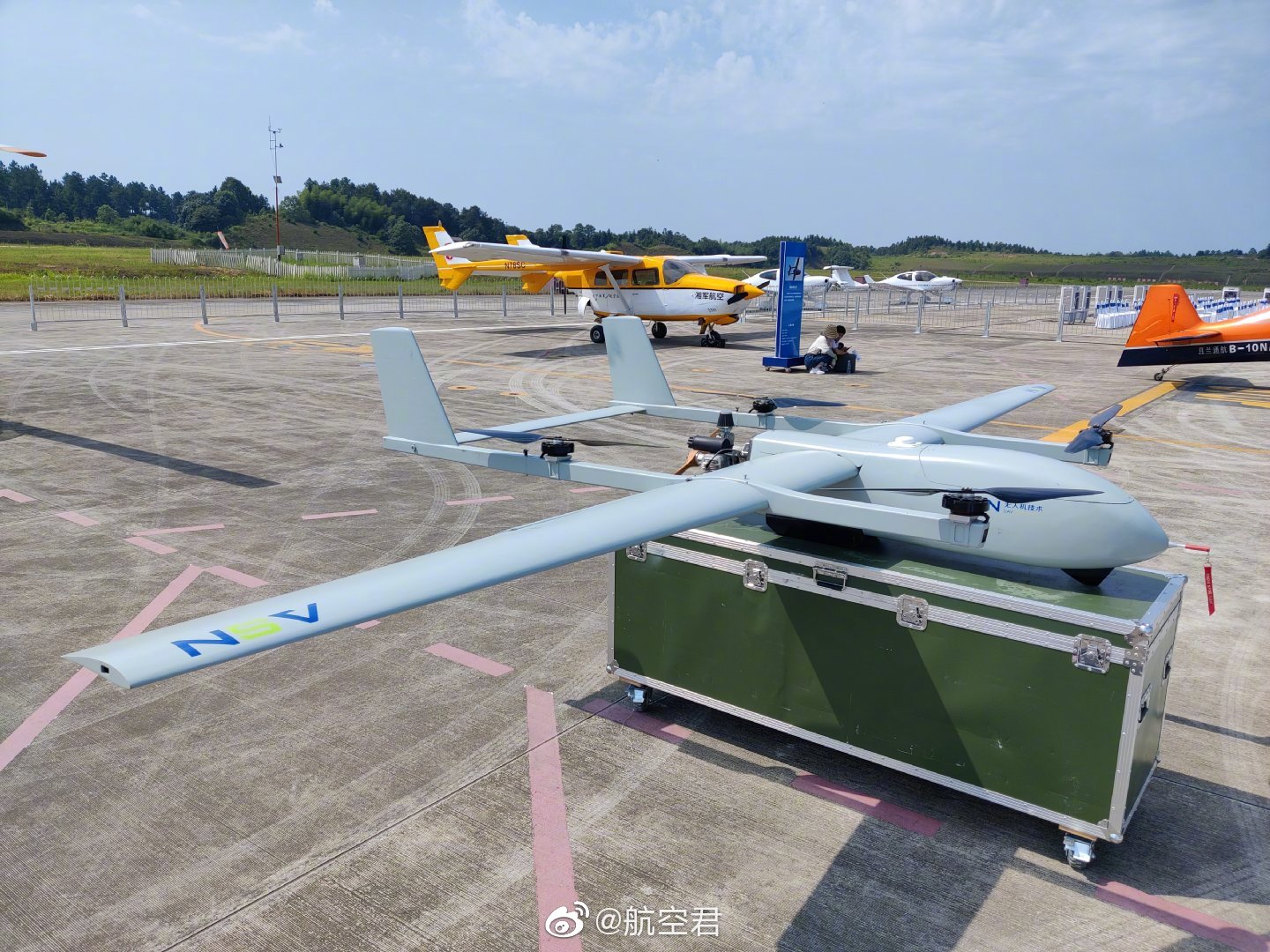You are using an out of date browser. It may not display this or other websites correctly.
You should upgrade or use an alternative browser.
You should upgrade or use an alternative browser.
Chinese UAV/UCAV development
- Thread starter AssassinsMace
- Start date
- Status
- Not open for further replies.
broadsword
Brigadier
Joint operations between PLAAF and PLAGF, with Air Force drones providing target coordinates/guidance for long range artillery rockets.
When will it be possible for satellites to possess that kind of ability? Is it still beyond today's technology?
Too much lag? Timing limitation?When will it be possible for satellites to possess that kind of ability? Is it still beyond today's technology?
When will it be possible for satellites to possess that kind of ability? Is it still beyond today's technology?
IIRC, China is developing a satellite recon system with a 15 minute refresh time globally. Perhaps that can be reduced to 5 minutes or less if such a system was to focus on one theatre or AO. Still enough time for mobile targets to move away a safe distance. But should provide at least a lead for drones and strike aircraft to focus on.Too much lag? Timing limitation?
plawolf
Lieutenant General
When will it be possible for satellites to possess that kind of ability? Is it still beyond today's technology?
Theoretically, satellites already have that capacity. The issue is one of time on target, since satellites typically overfly a target area within a few minutes, whereas a drone can stay on station for hours or even days.
The limiting factor isn’t and never have been satellite communications, but rather the rest of the kill chain. Because you essentially need to reduce your kill chain from detection to weapon on target to a few minutes, including projectile flight time. That’s the main issue, because with the longest range stuff, just the projectile flight time could be longer than your satellite on station time.
So you will need to daisy chain multiple satellites and do seamless hand-offs.
The other issue is one of flexibility. Satellites can only view a small band of terrain each orbit, and carry very limited fuel, most of which is needed to periodically boost the satellite’s orbit to prevent orbital decay. So chaining orbits is a very big deal as that directly reduces the operational life of satellites.
So you will need a stupid number of billion dollar satellites to form comprehensive coverage, and even more to provide continuous coverage.
It’s probably only really viable for hunting enemy carriers and warships since the much larger size means you don’t need as many satellites, which can be further reduced by using geostationary observation satellites if you only need to cover a limited area; and the high value of the targets makes using fuel worthwhile. And that is precisely what China has done.
by78
General
Using drones as part of a multi-tiered ballistic missile defense. Space-based sensors provide early warning of incoming ballistic missiles. High-altitude drones then detect and track the missiles and feed targeting information to tactical UAVs. The tactical UAVs then release interceptors to down the ballistic missiles.




How China’s flying submarine drone could change the way sea battles are fought
- Researchers suggest their cross-medium UAV, which moved between water and air seven times in one test, capitalises on stealth underwater and agility in the air
- Although all eyes are on military applications, the researchers believe there could be civilian uses, such as in beach rescues
Not ballistic missile, the caption said hypersonic missileUsing drones as part of a multi-tiered ballistic missile defense. Space-based sensors provide early warning of incoming ballistic missiles. High-altitude drones then detect and track the missiles and feed targeting information to tactical UAVs. The tactical UAVs then release interceptors to down the ballistic missiles.


by78
General
Not ballistic missile, the caption said hypersonic missile
Right, thanks for the correction.
- Status
- Not open for further replies.


